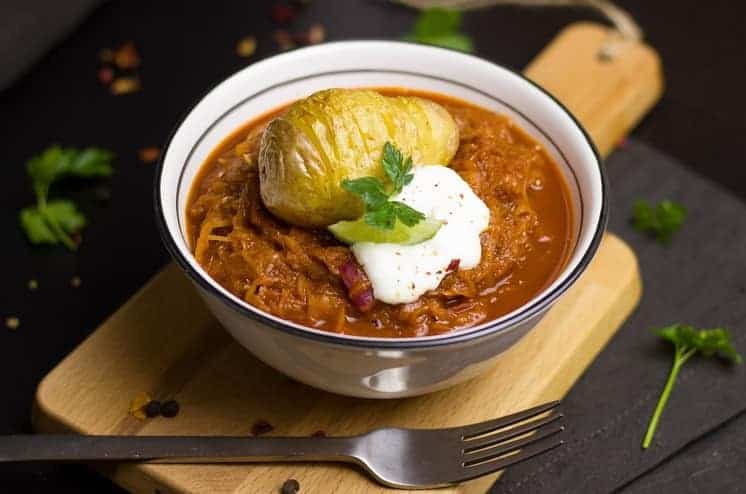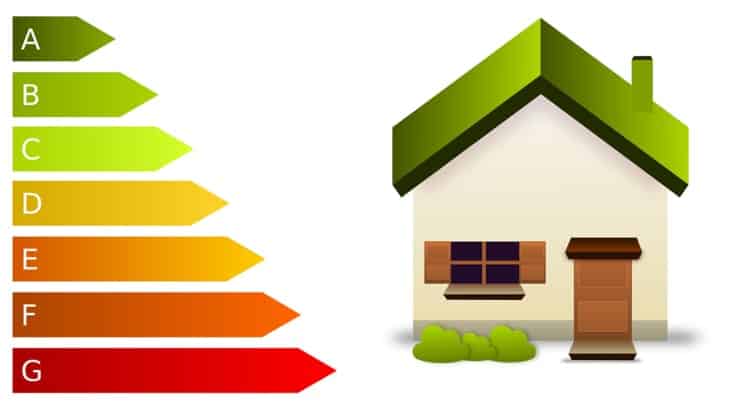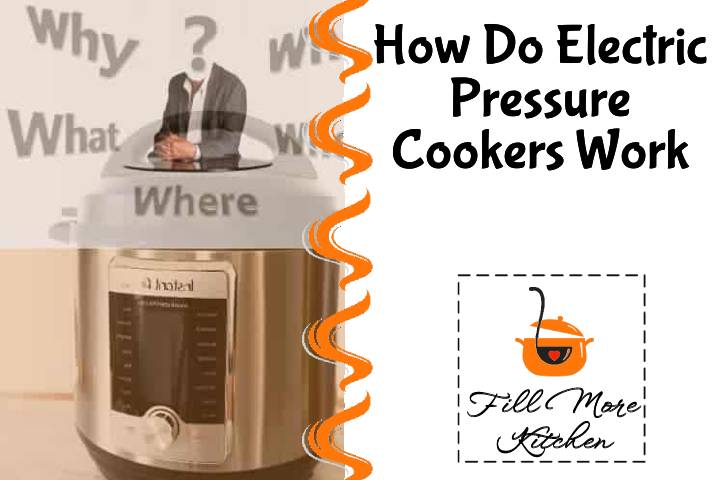In 1681, Denis Papi, a French physicist, presented the initial model of what would later become the pressure cooker to the Royal Society of London. This invention, similar to modern-day electric pressure cookers, increased water’s boiling point and significantly reduced cooking time.
It took approximately 250 years for the general public to have access to pressure cookers for domestic purposes, which were initially only available for stovetop use since electric pressure cookers did not exist at that time. Although stovetop pressure cookers are still in use today, the advent of electric pressure cookers has revolutionized the cooking industry.
After conducting some investigation, this is the conclusion I arrived at regarding how electric pressure cookers operate.
Do you want to know how electric pressure cookers work? Unlike their stovetop counterparts, these cookers come with a built-in heating element that heats the contents of the sealed container when powered. With the help of sensors, an electric pressure cooker can automatically regulate temperature and pressure, requiring almost no manual adjustments. Once the desired temperature and pressure are reached, the heating element goes into standby mode as long as those levels are maintained. However, if there is any change in the levels, the heating element is reactivated until they reach the desired levels once again.
Electric pressure cookers and traditional stovetop pressure cookers operate based on the same principle, which is steam pressure. The process that a pressure cooker performs is straightforward but remarkable.
Initially, the electric pressure cooker is loaded with liquid and tightly closed, then the liquid is heated until it reaches boiling point, resulting in the formation of steam.
When using an electric pressure cooker, the container is tightly sealed, with only a small valve to release steam slowly, causing the steam inside to create pressure, resulting in two outcomes:
- Increasing pressure raises the boiling point of water: Water typically boils at 212F, but with a pressure cooker, the water can reach temperatures up to 250F due to increased pressure inside the container.
- Liquids are forced into the food by pressure: As a result of the heightened pressure, moisture and heat are also pushed into the food, resulting in more tender meat and shorter cooking times.
Both electric and stovetop pressure cookers utilize the principle of increased pressure to significantly reduce cooking times.
What’s the Difference Between an Electric and a Stovetop Pressure Cooker?
Given that both electric pressure cookers and traditional stovetop pressure cookers operate on the same principle, what sets them apart?
Electric pressure cookers are designed to be more intricate than their stovetop counterparts, yet they offer greater ease of use. However, it’s important to note that traditional stovetop cookers still excel in certain tasks and have their own unique strengths.
Electric pressure cookers, which belong to the third generation of pressure cookers, have their own heat source unlike traditional pressure cookers that are placed on the stove to utilize heat, hence referred to as “stovetop pressure cookers”.
Electric pressure cookers are designed for automation and demand minimal supervision and upkeep. The cooker automatically regulates pressure and temperature levels, making necessary adjustments until they reach the ideal range. Built-in sensors detect signals that indicate whether the levels are stable or not, based on which the appliance decides whether to activate the heating element or not.
Less energy is consumed when the heating element runs intermittently.
The electric pressure cooker is equipped with sensors that automatically regulate pressure levels, making it more advanced than the traditional stovetop pressure cooker that requires manual adjustments by the user.
Conventional cookers are equipped with a gauge that displays the temperature and pressure levels, requiring manual adjustment of the stove’s temperature when the levels are unbalanced.
Due to its high level of automation, the electric pressure cooker is simpler to master compared to a conventional stovetop cooker.
The Instant Pot is a well-known electric pressure cooker that would have been considered witchcraft by Denis Papin, the inventor of the steam digester in 1679.
Electric pressure cookers like the Instant Pot have additional functions that can be activated with a simple button press, such as slow cooking, rice cooking, and yogurt making, in addition to their primary function of pressure cooking.
Are Electric Pressure Cookers Safe?

Despite the fact that pressure cookers are now fail-safe, people still have concerns about pressure cooking. The idea of trapping pressure in a heated container may seem hazardous, but modern pressure cookers are entirely safe to use.
Developing safety measures has been a priority for manufacturers to ensure the safe usage of their products, and modern electric pressure cookers are equipped with various safety systems.
Electric pressure cookers are equipped with back-up vents and overpressure valves that allow for the release of excess pressure. It is important for pressure levels to remain stable, but in case the cooker continues to heat up even after reaching full pressure, having a release valve for excess pressure is very useful. Additionally, if the regular release valve becomes clogged during cooking, the overpressure plug can be utilized.
Finally, in order to avoid the lid from flying off when opened, the sealing ring located inside the lid stops the user from opening it until the pressure has decreased.
When all the features of an electric pressure cooker are functioning correctly, it can provide a sense of security to the user. It is crucial to regularly inspect both the components and features to ensure they are operating as intended.
Are Electric Pressure Cookers Better Than Stovetop PCs?
Pressure cookers are known for their speedy meal preparation, and although both the traditional stovetop and electric versions share this trait, studies indicate that the former is slightly quicker than the latter.
Compared to the heating element in electric pressure cookers, the stove generates heat more efficiently, but it necessitates greater attention from the user since they must regulate the temperature to maintain stable pressure levels.
While the traditional pressure cooker requires frequent attention, the electric pressure cooker offers more convenience as it can be left unattended, although it is not advisable to do so and leaving your house is strongly discouraged.
While occasionally monitoring the electric pressure cooker, I multitask by attending to other household tasks as I begin cooking.
One of the significant benefits of utilizing an electric pressure cooker is its flexibility. Typically, these cookers come with various buttons that provide different cooking techniques. It is not unusual for an electric pressure cooker to function as a rice cooker or slow cooker as well.
Electric pressure cookers require more time for cleaning as some parts cannot be soaked in water, unlike stovetop pressure cookers that lack electric components and can be submerged in water without any issues.
Are Electric Pressure Cookers Energy Efficient?

The duration of an appliance’s cycle is directly proportional to its operating cost. If the appliance is used for extended periods daily, it will undoubtedly result in a considerable expense. Hence, it is advantageous to employ fast cooking techniques. Pressure cookers are known to be significantly faster than other methods, with some models being up to 70% quicker.
Although electric pressure cookers are not as fast as stovetop ones, they are still speedy according to tests. Additionally, it’s important to note that electric pressure cookers have the capability to activate the heating element only when necessary. For instance, when cooking with an Instant Pot for an extended period, the heating element is utilized for approximately 40% of the total time.
Using an electric pressure cooker is a more eco-friendly option as it requires less water compared to boiling on a stovetop.
How Do Electric Pressure Cookers Release Pressure?
After cooking with an electric pressure cooker, the lid cannot be opened until the pressure inside is released, which can be achieved through two different methods.
- Natural pressure release: After cooking, the electric pressure cooker is left in the Sealed position, and the pressure is gradually released as the temperature lowers. The float valve drops and unlocks the lid once all the pressure has been released.
- Quick Release: At the end of the cooking process, switch to Venting/Quick Release, which will activate the release valve and allow pressure to decrease as steam is expelled from the container in bursts.
Electric pressure cookers have two types of pressure release methods: quick release and natural release. Quick release is useful for preventing overcooking by instantly releasing pressure, while natural release takes longer. For foods that produce foam, it is recommended to use the natural release method to prevent foam from escaping through the release plug.
It is important to remember that the contents of the container will continue cooking even after the pressure cooker has released pressure, and if natural pressure release is used, there is a risk of overcooking if not timed properly.
You can also check this video about “How Do Electric Pressure Cookers Work?”
Check out our top 10 reviews!
Related posts
https://fillmorekitchen.com/how-to-stop-a-microwave-from-beeping/
https://fillmorekitchen.com/what-happens-if-water-gets-in-a-sous-vide-bag-you-should-do-this/
https://fillmorekitchen.com/what-to-do-if-your-oven-says-f2-beeps/
https://fillmorekitchen.com/can-you-eat-soup-left-out-overnight/
https://fillmorekitchen.com/should-you-freeze-bananas-with-or-without-peel/



